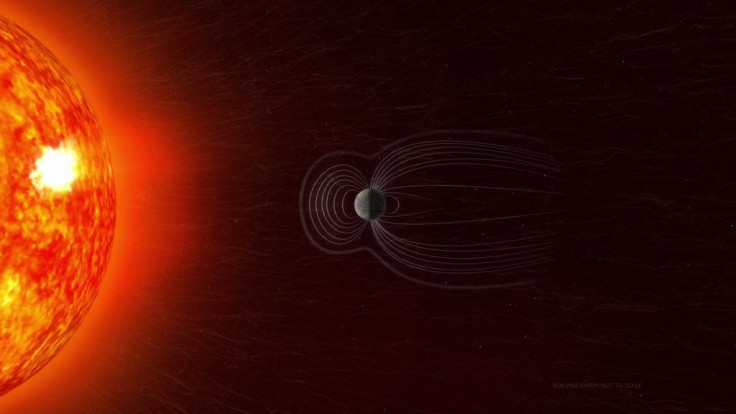Why NASA Is Tracking The 'Dent' In Earth's Magnetic Field
KEY POINTS
- The Earth's magnetic field is much like a protective shield around the planet
- There is an unusually weak spot in the magnetic field
- This weak spot may be problematic for future satellites that pass through it
- NASA scientists are tracking the anomaly for future satellite missions
- Tracking the anomaly can also shed light into the inner workings of the planet
NASA scientists have been studying a mysterious "dent" in the Earth's magnetic field.
When the sun expels solar material, it is the Earth's magnetic field that protects the planet by repelling and trapping the charged particles. But there is a spot in the magnetic field over South America and the Atlantic Ocean where the magnetic field dips closer to the surface.
In other words, there is a "dent" in the Earth’s protective shield and its called the South Atlantic Anomaly (SAA).
The solar material that gets trapped in the Earth's magnetosphere reside in two donut-shaped belts surrounding the planet called the Van Allen Belts, the innermost belt of which being 400 miles from the surface. At this distance, the particle radiation is safely away from the surface of the Earth and the satellites around it. However, because of the difference between the Earth's rotational and magnetic poles and the SAA, some particles from the belt get to reach closer to the surface.

This could be problematic for future satellites that will be deployed in low-Earth orbit. Already, instruments such as the Global Ecosystem Dynamics Investigation mission on the International Space Station are being affected by the SAA, causing detector "blips" about once a month.
Hence, ensuring the safety of future satellites is one of the goals of scientists that are consistently tracking the SAA. Observations and information on SAA can help inform satellite design so as to make sure they will not suffer glitches, or worse, permanent damage if they happen to travel through the SAA.
"Even though the SAA is slow-moving, it is going through some change in morphology, so it's also important that we keep observing it by having continued missions," a geophysicist at NASA's Goddard Space Flight Center, Terry Sabaka, said in a NASA feature. "Because that's what helps us make models and predictions."
Since the Earth's magnetic fields actually originate from within the planet's outer core, keeping tabs on SAA can help scientists have a better understanding of the inner workings of the planet. Further, studying it may also shed light on the Earth's magnetism, which even animals use for migration.
Only recently, a team of scientists estimated that the SAA may be about 11 million years old. Although this suggests that the SAA is not in danger of a polar reversal any time soon, as some scientists were concerned about, experts still continue to track the anomaly to better understand it, to monitor future changes and to prepare for future satellites as well as human missions in space.
© Copyright IBTimes 2024. All rights reserved.






















